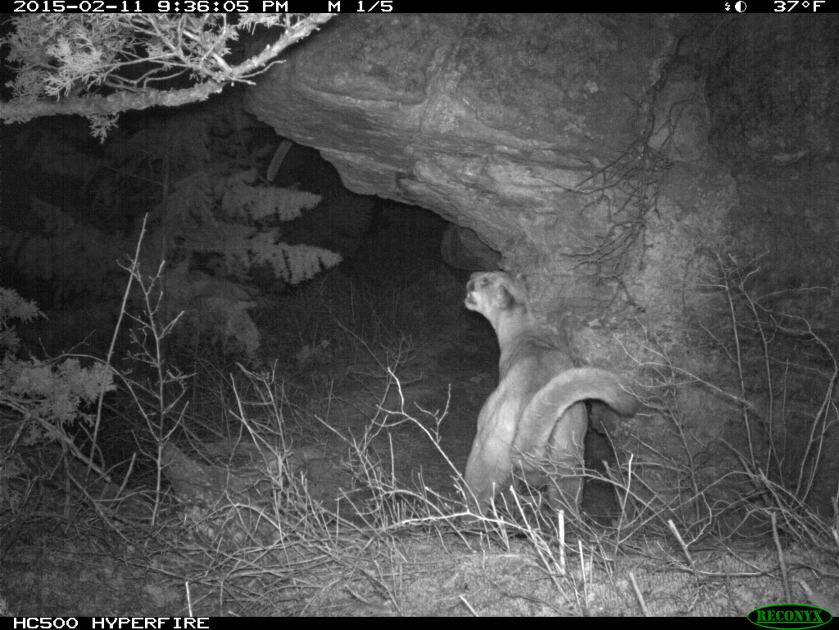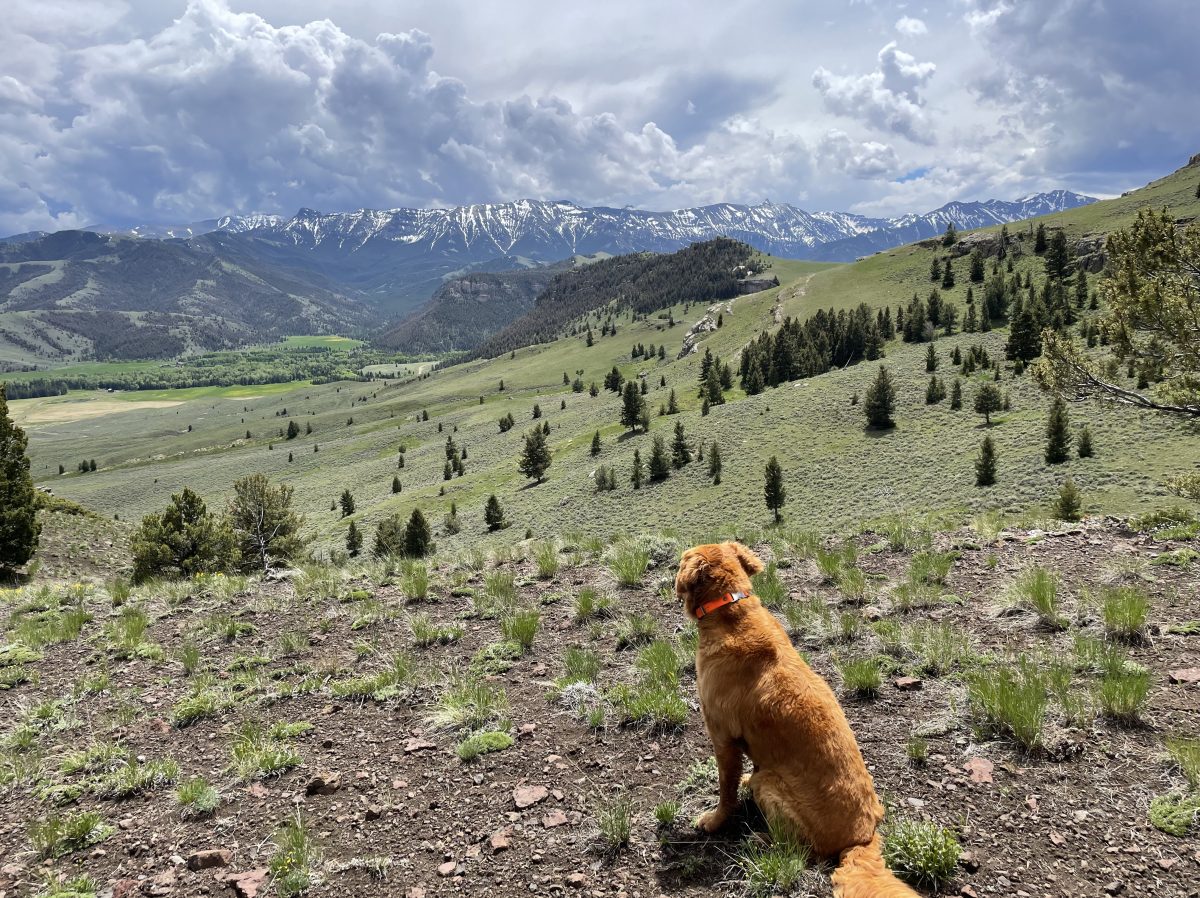A few weeks ago I attended Toni Ruth‘s Cougar Class in Yellowstone National Park through the Yellowstone Association. That class gave me some extra hints about tracking cougars. I had a sense where to find tracks in my area, but identifying scraps, and finding lays and dens was another thing. Applying what I learned, I headed out and found a kill site. I’ve found them before, but Toni suggested that cougars usually bed down close to their kill (if its a large kill they might want to eat some more later), and also usually have a toilet within 300 feet or so.
Once I found this young deer kill in a rock crevice, I began investigating for a bedding site and a toilet.

Within 50 feet of the kill, I found the toilet. Cats are extremely clean and meticulous. They tend to use the same area to defecate and then make sure to cover it each time. This toilet had obviously been used for years. I knew the area and there’s a ravine about 300 yards to the east. I’d found lots of cat kill evidence there before so this was a good place for this cat.
Then I began looking around for a bed site. The toilet was on the flats, but the kill had been dragged below to a small cliff area. I began investigating the rock edges. Toni had pointed out how the cats she collared in Yellowstone were traveling at the base of very high cathedral-type cliffs. I figured this cat might be doing the same. And lo and behold I found a very nice small cave–big enough for a cat to bed down in. Toni had told me that when I find these, to crawl inside and look for ‘guard hairs’, the white hairs on the belly of the cat. They apparently shed easily. Following her instructions, I found several white hairs.

Judging from the location, knowing that deer had been killed for many years in the nearby ravine, I hypothesized that this was a bed site that cat (or other cats) frequented. Toni said that cats use bed sites over and over, and that multiple cats will use them.
I returned a few days later with a trail camera and set it on the small cave. I anticipated that if I got anything, it might be months of waiting.
Another thing I learned from the class was that a better place to site a trail camera for lions is a scrape. This is because male lions use scrapes (a scent mark) to communicate a lot of information, especially to find females. And a lot of other animals will visit these scrapes. Dan Stahler who visited the class for a morning had a video of a grizzly bear taking a full days nap on a cougar scrape!
So today I went to put my camera on that scrape I found. I stopped to check the bed site cam and look what I found.

Cats, including your common housecat, have what’s called a Jacobson’s organ on the roof of their mouth. This puma was smelling what had taken place in his bed site (myself as well as my dog had been there when we placed the trail cam), then drew that scent up into the roof of its mouth for a better smell. The Flehmen response is similar to smelling but the vomeronasal organ is interfacing separately with the brain. It is usually employed for detecting sexual pheromones from the urine but may also be used for supplemental analysis of any interesting smell.
I asked Toni in her seven years of cougar studies in YNP, how many times she saw mountain lions (not counting the collaring done with dogs). Her reply–3 times! I still have yet to see a cougar despite all this tracking.

Fantastic read. Love it.
LikeLike